The idea that every person should have access to affordable education isn’t new—Thomas Jefferson proclaimed it essential to any democratic nation. In 1789, Massachusetts served an important historical role in requiring government provide school for all. Education, however, remained mostly private and inaccessible for the masses due to 18th and 19th century views of the public as “barbaric.”
Fast-forward to the present, knowledge-based global economy, linking learning and earning, and consider how much progress has been made in more than 215 years. The scorecard is mixed on providing affordable access to higher education, including vocational training, certificates, associate and bachelor degrees. Today, more than 75 million adults have an associate degree or less, with many struggling to earn a fair wage. Despite Jefferson’s ideals, higher education remains disproportionally accessible only to the affluent.
Higher Education: A Delivery Model Under-Attack
For the 2012-2013 academic year, the average annual cost of tuition and fees at four-year public colleges increased by an average of six percent, even after 10 consecutive years of compounded growth in excess of five percent. At the same time, according to the College Board, federal financial aid decreased, along with students’ purchasing power. This significant and sustained pattern of price increases has far outstripped ordinary consumers’ ability to pay, and even exceeds the growth rate in health care costs during the past decade.
Public colleges and universities have increased tuition in an effort to offset government budget cuts and decreased funding, while private universities continue to raise prices due to rising costs. Much of the higher cost of higher education is being borne by the attendees, with student loan debt now standing at a gargantuan $956 billion, including $42 billion added during the last quarter—the biggest quarterly increase since 2006. More worrisome, the percent of student loan balances 90+ days delinquent increased to 11 percent last quarter, symbolizing the highest level in recent memory.
Community colleges have traditionally offered a less expensive alternative; however, from 2003-2012, even two-year community colleges have consistently increased prices in excess of five percent annually, while many programs have been rationed and the number of locations nationwide has remained flat at 1,600 and is expected to shrink in the next five years.
The time for a new approach in higher education has arrived.
The Affordability Barrier
Higher education remains in serious need of democratization; affordability is the cornerstone element of that aspiration. At Penn Foster—a leader in career-focused online education designed to address the skills gap in America—students can get started on changing their lives and increasing their confidence with a modest down-payment and for less than $50 a month. Moreover, a student can graduate entirely debt free.
Students can earn a fully-accredited associate degree for 40-50 percent less than at traditional brick-and-mortar institutions. For example, students can enroll in an associate program to become a veterinary technician, one of the fastest growing career fields in the country, for only $7,000—a degree that can cost anywhere from $15,000 to $40,000 elsewhere. An important component of the emerging approach to education includes similar “pay as you go” systems and delivery models that make education far
more accessible for everyone.
This debt-free, consumption-driven payment approach becomes the essential variable of the new calculus many students are using to compute their Return on Education (ROE), or the key test of the success of the investment. Education is being re-imagined.
In this new world, both ground-based and online schools use a range of learning models that uniquely target wide audiences with different needs. This results in education that differs by consumer targets, content types, price points and even accreditation standards, but all at superior levels of affordability.
For some there may be a stigma associated with the online model, but it is already mainstream. More than 6.7 million people— roughly a third of all students enrolled in postsecondary education—took an online course for credit in fall 2012, an upturn of nine
percent. Online education offers customizable programs that students can self-pace to better balance the pressure of work, family and academics. With much lower physical and operational costs, yet typically comparable accreditations and quality, online
educators like Penn Foster can deliver superior value.
Investment in technology and faculty support makes learning as engaging as possible for students, including mobile applications, seamless online courses and social media that create that “community” feeling of more traditional institutions. By creating a virtual community of faculty and students focused on the same programs of study, students can get advice from peers and teachers without the constraints of time and geography. This open platform improves confidence and reduces barriers to achievement.
The Path Ahead
The emerging “consumerization” of higher education will be driven by greater expectations of value, alternative ways to “attend” school and ongoing reskilling for sustained employability. Education will be increasingly recognized as a consumer decision with a valuation based on price, quality and expected returns.
As the economy remains uncertain entering 2013 and businesses lack skilled employees, it is more important than ever to make education more affordable. The result will better the lives of ordinary Americans, fill the skills gap plaguing businesses and ultimately drive economic growth. A key part of the path ahead will be to finally embrace Thomas Jefferson’s sage advice to make education a privilege every American can enjoy.
Content from Bostinno, January 2013. Democratizing Education: Life, Liberty & the Pursuit of…Higher Education?
